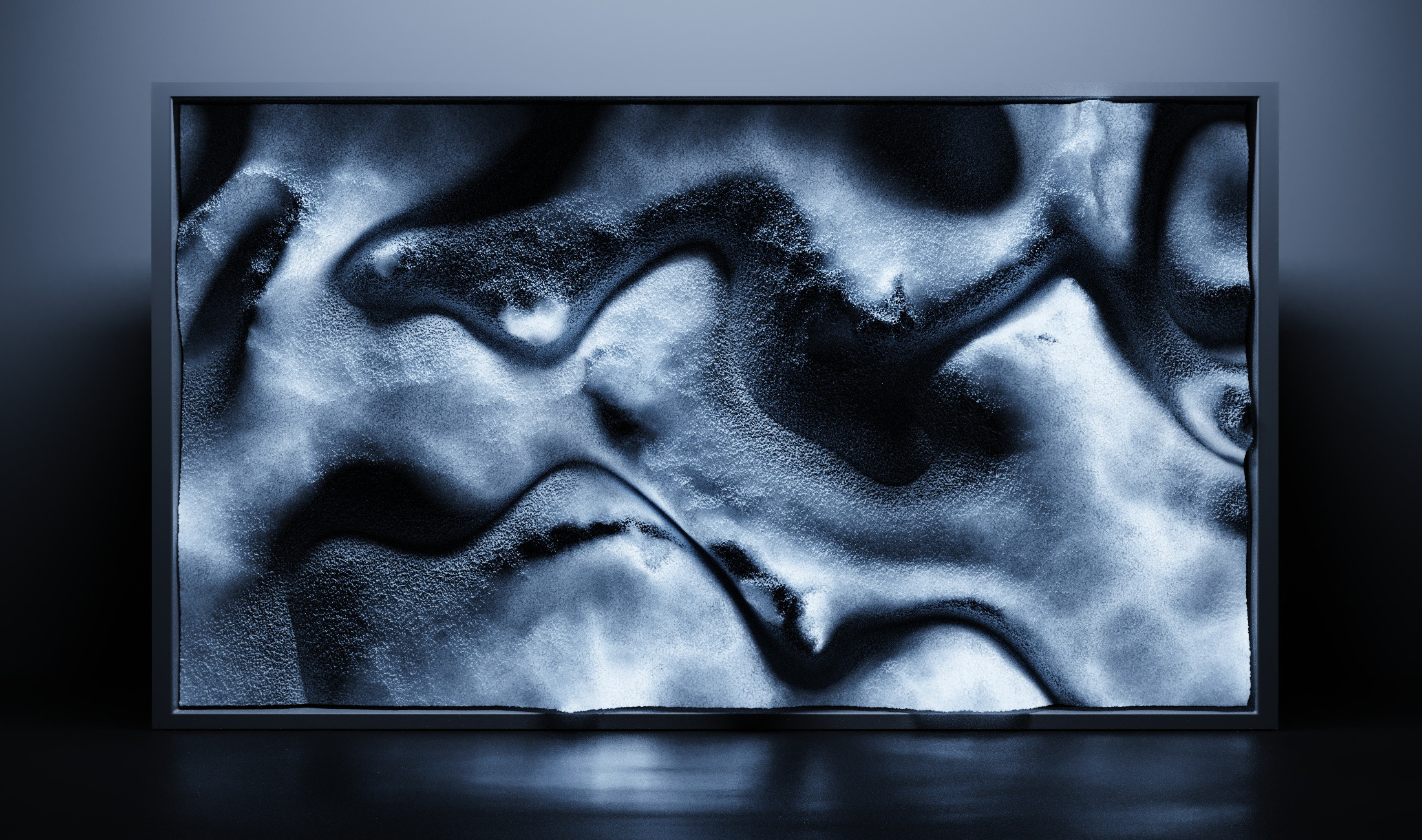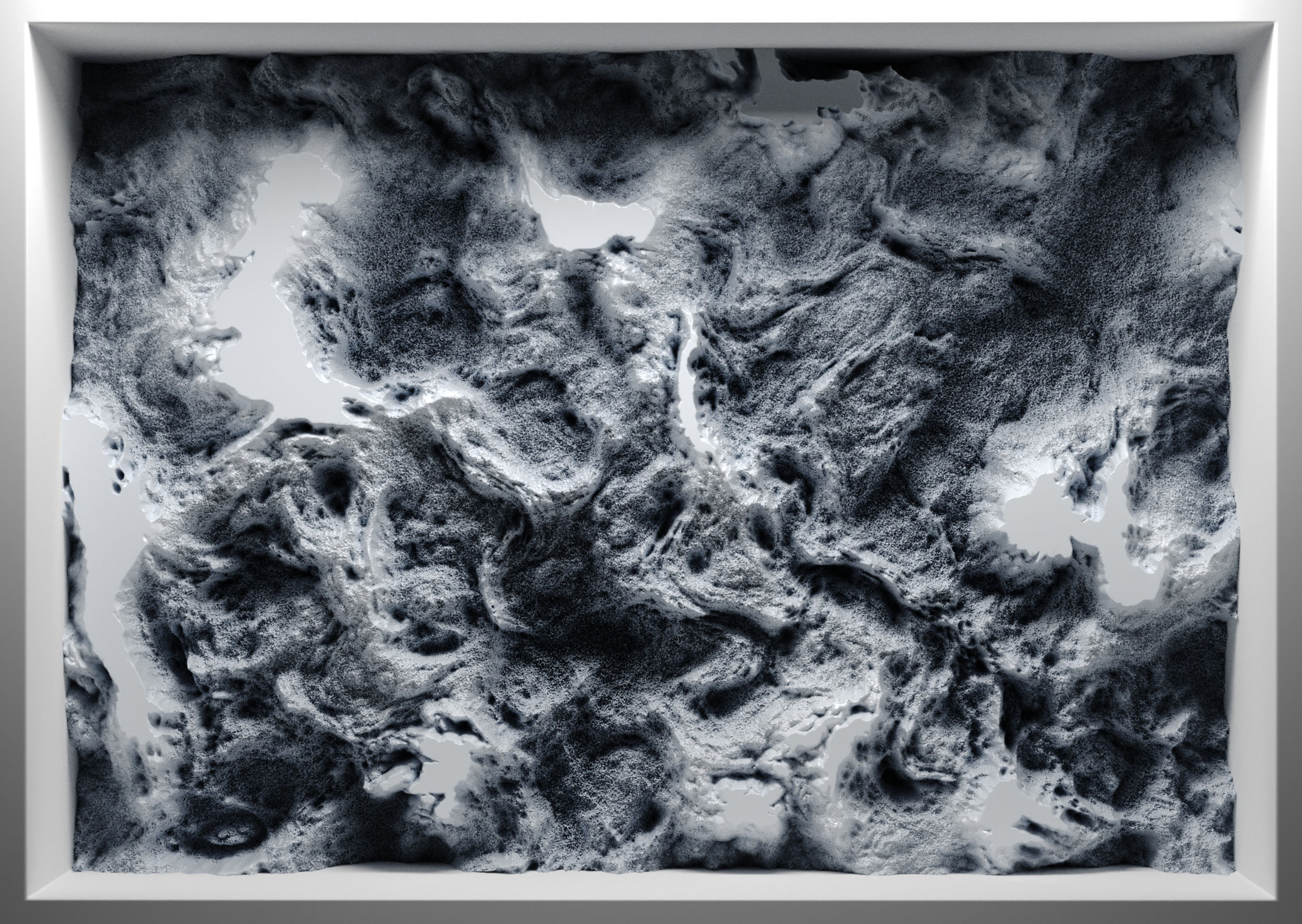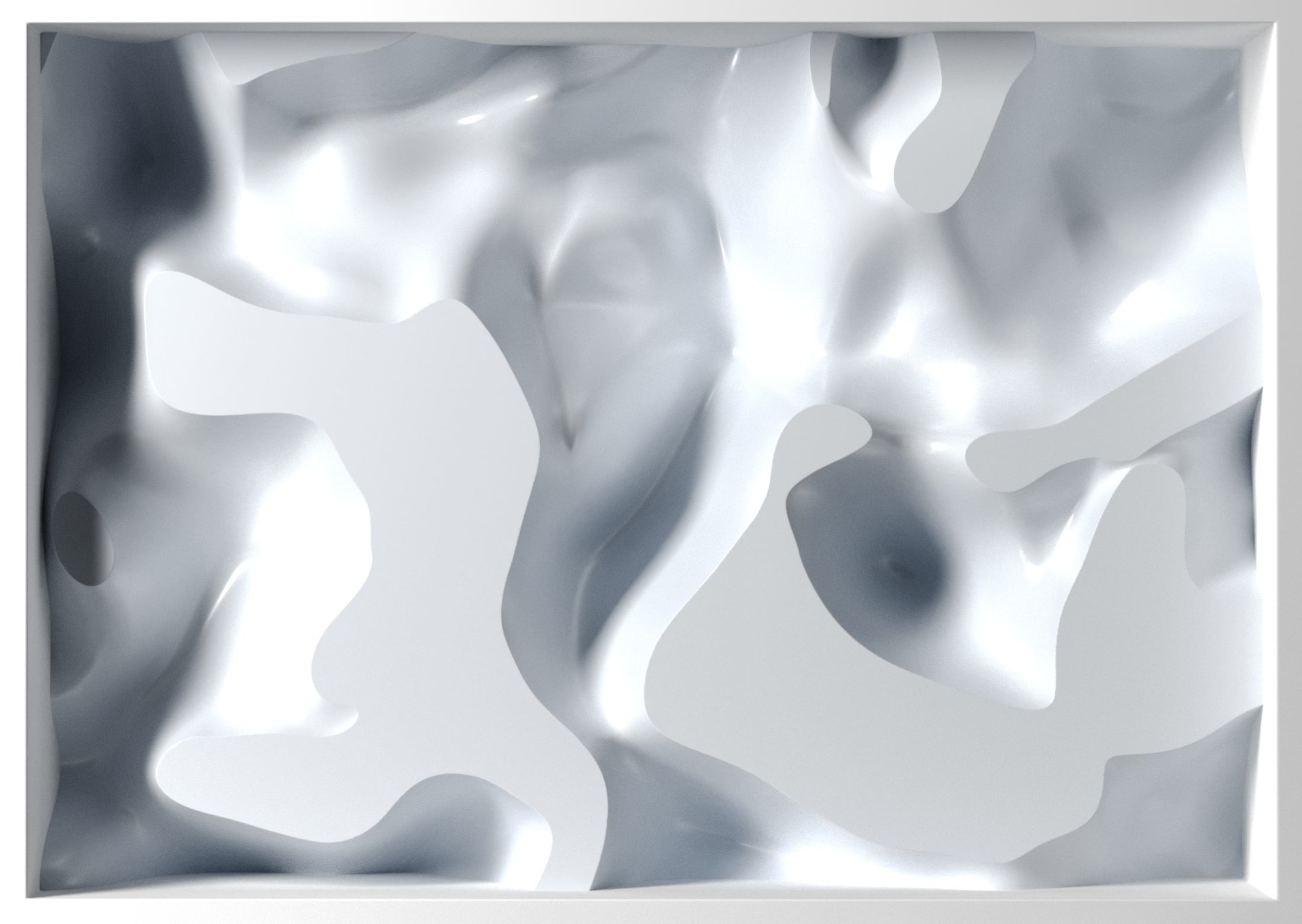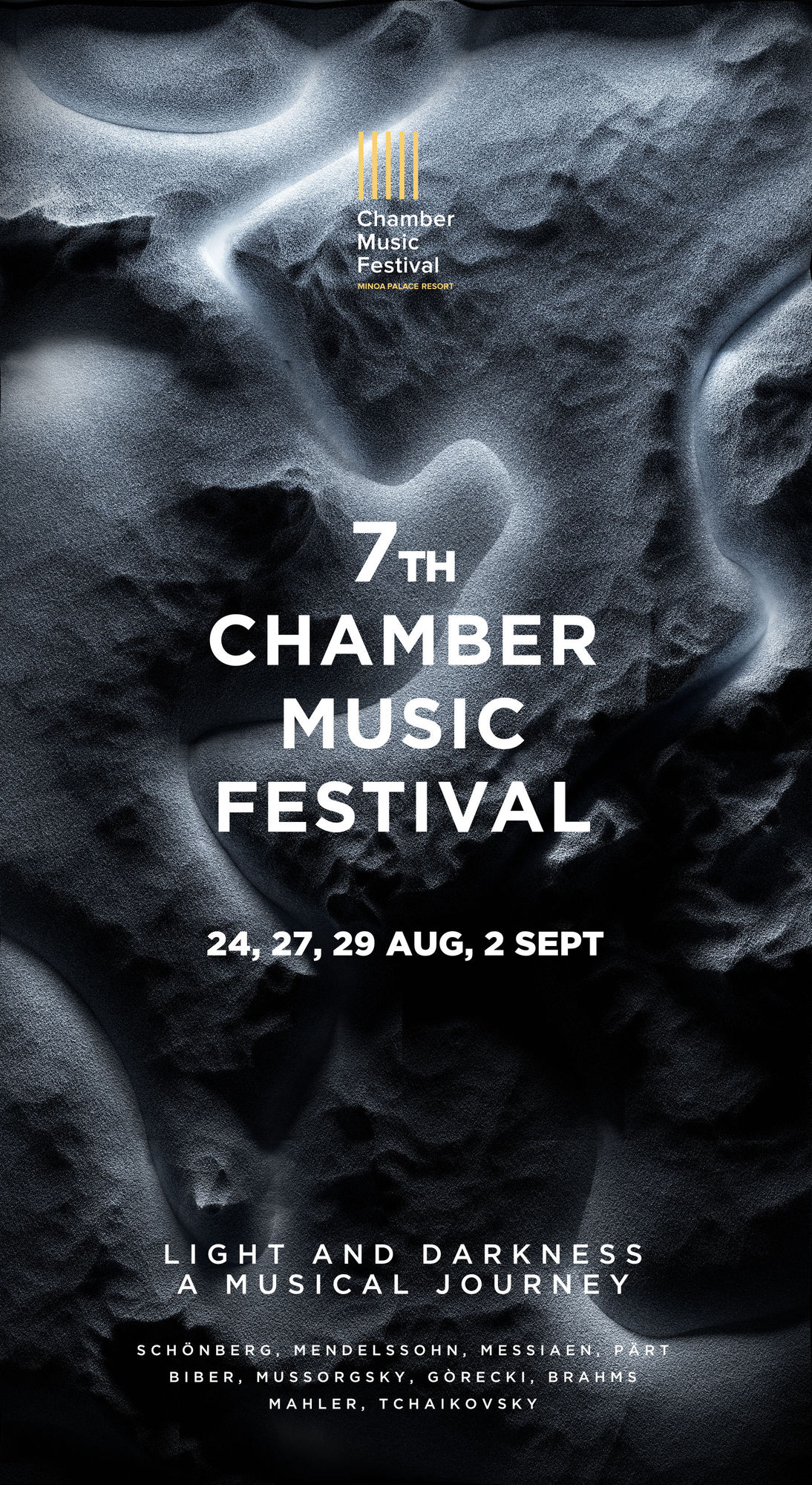THE PLASTIC STUDIO
Chamber Music Festival
CLIENT
Chamber Music Festival
SERVICES
Artistic Direction
3D Animation
Graphic Design
The 7th Chamber Music Festival bids farewell to the Summer and welcomes Fall. This year’s festival is a musical journey through Light and Darkness. This theme is expanded and researched in four concerts.
The first concert exposes the theme of darkness and light through Schönberg’s Verklärte Nacht and Mendelssohn’s sextet. The second concert is dedicated to our dark part, the spiritual, the unknown, the inner struggle and contemplation with works from Olivier Messiaen, Biber and Arvo Pärt. The third concert depicts the light, the outside, the impulse that reaches our senses, therefore it is a concert of works inspired by images from Debussy, Mussorgsky and Górecki. Finally, our fourth concert is a tribute to the loss of a dear friend. It is a memorial and a goodbye.

Particle simulations as well as complex noise shaders were used to model a material that resembles a living organism. The concept of light and darkness is further enhanced by streaks of caustics and areas of no light and the flow between those embarks in a never ending loop reminding us of our seemingly binary but also fluid world.
Candia was a center for artistic activity where Eastern and Western cultures co-existed harmoniously, where around two hundred painters were active during the 16th century. Crete and Greece were through the history meeting points, fertile soils for fresh ideas coming from the west and the east. This environment proved indispensable for the birth of a civilisation so unique in its intellectual produce as El Greco’s art itself.

Inspired by Luigi Russolo’s “The Art of Noises” written in 1913 a new research was made on the families of noises based on the six families of noises for the Futurist Orchestra.
This created a noise map guide that corresponds each noise shader to a specific emotional response such as fear, anger, anticipation, surprise, grief, joy etc. As we moved from the inherent noise of the analog world to humans’ first art forms we strived to simplify shapes and colours. The need for realism and realistic representation, found in the sculptures and paintings of ancient greece and renaissance, lead us to study this inherent noise again and created a more textured form of visual art. With the advent of the digital era and the industrial revolution, new space was given to the representation of noise itself as a fundamental visual element for a new kind of visual arts more fit to a world that moves away from clear shapes, colours, tribes, traditions and symbolic languages and contrary to the common everything-becomes-mud belief, it embraces the complexity and codifies it to new forms and meanings.

If Crete gave El Greco his descent and the heart of his art, if Italy gave him the style and the fundamental artistic preparation, Spain and Toledo allowed him to immerse himself in a religious environment full of Spanish mysticism. According to Hortensio Félix Paravicino, a 17th-century Spanish preacher and poet, “Crete gave him life and the painter’s craft, Toledo a better homeland, where through Death he began to achieve eternal life.”
Because of his unconventional artistic beliefs (such as his dismissal of Michelangelo’s technique) and personality, El Greco soon acquired enemies in Rome. In 1577, El Greco migrated to Madrid, then to Toledo, where he produced his mature works. At the time, Toledo was the religious capital of Spain and a populous city with “an illustrious past, a prosperous present and an uncertain future”. El Greco regarded colour as the most important and the most ungovernable element of painting, and declared that colour had primacy over form. In his mature works El Greco demonstrated a characteristic tendency to dramatise rather than to describe.The strong spiritual emotion transfers from painting directly to the audience.
